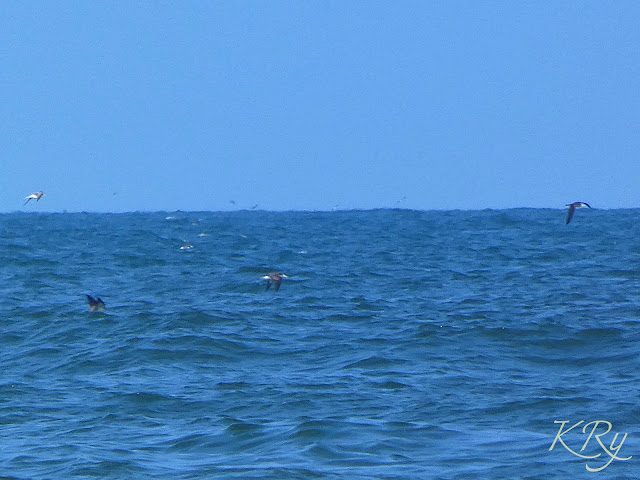On a very, very hot day, I joined a seabird breeding colony survey in Kujukuri.
A lone Little tern (Koajisashiコアジサシ)
 |
On a very, very hot day, I joined a seabird breeding colony survey in Kujukuri.
 |
A family of Azure-winged magpies (Onagaオナガ) were foraging in the cherry trees near our house. I was just passing by and I didn't have my camera!
I see azure-winged magpies around here only occasionally even though they are not uncommon birds. (probably more often hear them rather than actually see them) I always feel like a treat when I come across a large family like today.
A pair of Oriental turtle doves (Kijibatoキジバト) comes to our garden every now and then to forage and/or bathe 😍
Japanese grass lizards (Kanahebiカナヘビ) have woken up from hibernation and are often making the most of the sunshine to warm up.
I noticed this shell far too late! missed the dragonfly... 😭
Another migration season, another breeding season.
It was a lovely day and now is the time for all sorts of flowers and blossoms 🌺🌼
and it's a very busy time for parent birds to bring up their little ones.
Even only a short stay in the park made me smile and feel extremely happy 😍
Along with Black-crowned night herons (Goisagiゴイサギ) and Great egrets (Daisagiダイサギ), Grey herons (Aosagiアオサギ) have nests there too. They are normally the first to start building nests and I guess most of Grey herons have eggs in their nests.
There used to be only herons and egrets in this heronry but Great cormorants' nests were recorded last year.
a great egret had an itch...😄
Under all the dramas on the water, some wintering ducks were still fuelling for their migration ahead.
Shovelers (Hashibirogamoハシビロガモ)
Okusa Yatsuda Ikimono-no-sato is kind of a nature/culture reserve, manually managed organic paddy fields only 4 miles away from the centre of Chiba City.
A totally different world from the city centre!
Great egrets (Daisagiダイサギ) were in their gorgeous breeding plumage.
You can hear the volume of the frogs' calls!
Another bird which would appreciate the fields full of amphibians is a Grey-faced buzzard (Sashibaサシバ).
The buzzards are migratory and she must have arrived here to breed quite recently. She got here at the right moment for a free buffet!Away from the frogs, two hwameis were having a singing competition.
The Chinese hwamei (Gabichoガビチョウ) is recorded as being imported from China for their beautiful songs as early as in the 18th century but hadn't been recognised in the wild until the 1980s. Since then for a while, they were found only in localised areas. Now they seem to have sped up spreading far and wide and it's not so difficult to see/hear them in Chiba.
Okusa is not very large but is full of signs of wildlife.
We saw a good variety of bird species during the trip to Watarase.
Male Meadow bunting (Hoojiroホオジロ) was tweeting above us while we were having lunch.Over the drained areas, Black-eared kites (Tobiトビ) were flying low and high.
Watarase Yusuichi, a detention basin to store flood water and vast reedbeds surrounding the basin was the destination of our 2-day birdwatching trip in March.
The water is full in winter for wintering waterfowl but on the 1st of March every year, they have controlled reed burning and the water in the reservoirs is drained. That's why it looks like mudflats.
Many birdwatchers come here to see Oriental storks (Konotoriコウノトリ) and so did we.
They are magnificent looking birds and you won't miss them because of their size. (Teals look like tiny dots in the pictures!)
There is an artificial stork nest in the middle of the plain and a parent stork is sitting on eggs!